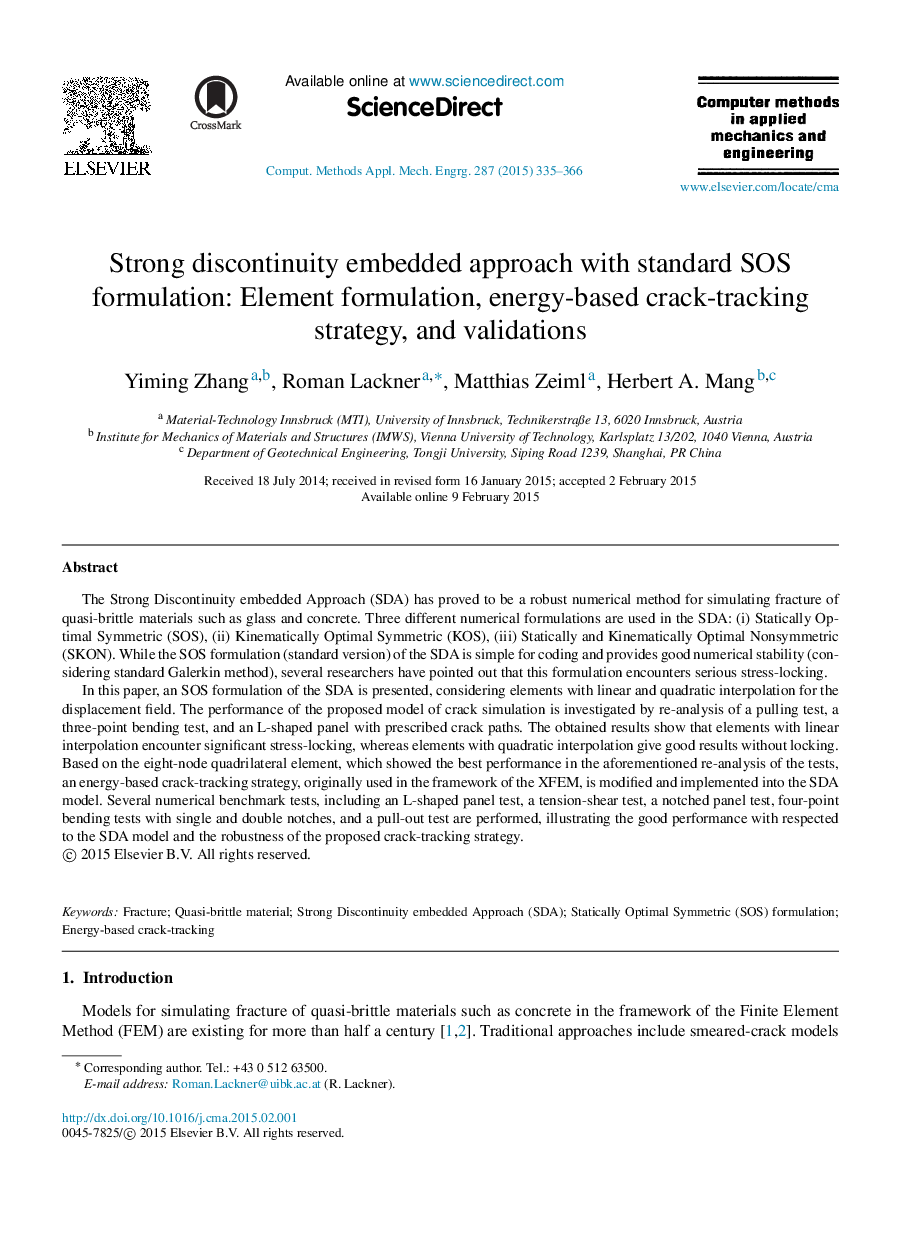| کد مقاله | کد نشریه | سال انتشار | مقاله انگلیسی | نسخه تمام متن |
|---|---|---|---|---|
| 498128 | 862967 | 2015 | 32 صفحه PDF | دانلود رایگان |

The Strong Discontinuity embedded Approach (SDA) has proved to be a robust numerical method for simulating fracture of quasi-brittle materials such as glass and concrete. Three different numerical formulations are used in the SDA: (i) Statically Optimal Symmetric (SOS), (ii) Kinematically Optimal Symmetric (KOS), (iii) Statically and Kinematically Optimal Nonsymmetric (SKON). While the SOS formulation (standard version) of the SDA is simple for coding and provides good numerical stability (considering standard Galerkin method), several researchers have pointed out that this formulation encounters serious stress-locking.In this paper, an SOS formulation of the SDA is presented, considering elements with linear and quadratic interpolation for the displacement field. The performance of the proposed model of crack simulation is investigated by re-analysis of a pulling test, a three-point bending test, and an L-shaped panel with prescribed crack paths. The obtained results show that elements with linear interpolation encounter significant stress-locking, whereas elements with quadratic interpolation give good results without locking. Based on the eight-node quadrilateral element, which showed the best performance in the aforementioned re-analysis of the tests, an energy-based crack-tracking strategy, originally used in the framework of the XFEM, is modified and implemented into the SDA model. Several numerical benchmark tests, including an L-shaped panel test, a tension-shear test, a notched panel test, four-point bending tests with single and double notches, and a pull-out test are performed, illustrating the good performance with respected to the SDA model and the robustness of the proposed crack-tracking strategy.
Journal: Computer Methods in Applied Mechanics and Engineering - Volume 287, 15 April 2015, Pages 335–366